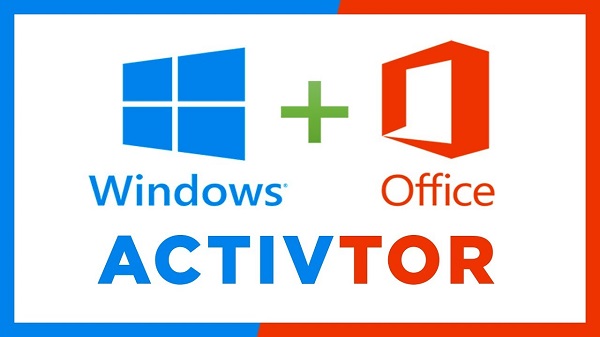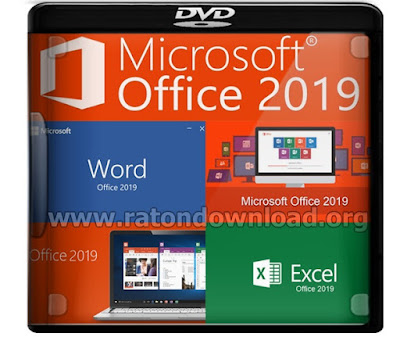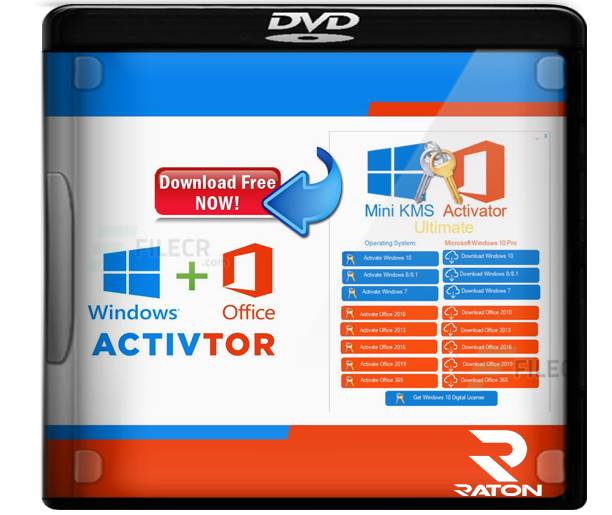-->
Microsoft 365 (free to current students, faculty and staff) includes the latest version of Office and other productivity apps, and is updated automatically. Go to download page Use Microsoft Office Professional Plus 2019 for Windows, a productivity suite of software for editing documents, creating spreadsheets, making computer slide shows. Configure a KMS Host Server to Activate MS Office 2019 and 2016. This guide applies only for Microsoft Office 2019/2016 under volume license excluding Office 365 ProPlus (this MS Office version is subscription-based and can be activated online only). Microsoft Office KMS Server Requirements.

Note
Office 365 ProPlus is being renamed to Microsoft 365 Apps for enterprise. For more information about this change, read this blog post.
This video shows how to set up Active Directory Federation Service (ADFS) to work together with Office 365. It does not cover the ADFS proxy server scenario. This video discusses ADFS for Windows Server 2012 R2. However, the procedure also applies to ADFS 2.0 — except for steps 1, 3, and 7. In each of those steps, see the 'Notes for ADFS 2.0' section for more information about how to use this procedure in Windows Server 2008.
Useful notes for the steps in the video
Step 1: Install Active Directory Federation Services
Add ADFS by using Add Roles and Features Wizard.

Notes for ADFS 2.0
If you are using Windows Server 2008, you must download and install ADFS 2.0 to be able to work with Office 365. You can obtain ADFS 2.0 from the following Microsoft Download Center website:
After the installation, use Windows Update to download and install all applicable updates.
Step 2: Request a certificate from a third-party CA for the Federation server name
Office 365 requires a trusted certificate on your ADFS server. Therefore, you must obtain a certificate from a third-party certification authority (CA).
When you customize the certificate request, make sure that you add the Federation server name in the Common name field.
In this video, we explain only how to generate a certificate signing request (CSR). You must send the CSR file to a third-party CA. The CA will return a signed certificate to you. Then, follow these steps to import the certificate to your computer certificate store:
- Run Certlm.msc to open the local computer's certificate store.
- In the navigation pane, Expand Personal, expand Certificate, right click the Certificate folder, and then click Import.
About the Federation server name
The Federation Service name is the Internet-facing domain name of your ADFS server. The Office 365 user will be redirected to this domain for authentication. Therefore, make sure that you add a public A record for the domain name.
Step 3: Configure ADFS
You cannot manually type a name as the Federation server name. The name is determined by the subject name (Common name) of a certificate in the local computer's certificate store.
Notes for ADFS 2.0
In ADFS 2.0, the Federation server name is determined by the certificate that binds to 'Default Web Site' in Internet Information Services (IIS). You must bind the new certificate to the Default website before you configure ADFS.
You can use any account as the service account. If the service account's password is expired, ADFS will stop working. Therefore, make sure that the password of the account is set to never expire.
Step 4: Download Office 365 tools
Windows Azure Active Directory Module for Windows PowerShell and Azure Active Directory sync appliance are available in Office 365 portal. To obtain the tools, click Active Users, and then click Single sign-on: Set up.
Step 5: Add your domain to Office 365
The video does not explain how to add and verify your domain to Office 365. For more information about that procedure, see Verify your domain in Office 365.
Step 6: Connect ADFS to Office 365
To connect ADFS to Office 365, run the following commands in Windows Azure Directory Module for Windows PowerShell.
Note In the Set-MsolADFSContext command, specify the FQDN of the ADFS server in your internal domain instead of the Federation server name.
If the commands run successfully, you should see the following:
- A 'Microsoft Office 365 Identify Platform' Relying Party Trust is added to your ADFS server.
- Users who use the custom domain name as an email address suffix to log in to the Office 365 portal are redirected to your ADFS server.
Step 7: Sync local Active Directory user accounts to Office 365
If your internal domain name differs from the external domain name that is used as an email address suffix, you have to add the external domain name as an alternative UPN suffix in the local Active Directory domain. For example, the internal domain name is 'company.local' but the external domain name is 'company.com.' In this situation, you have to add 'company.com' as an alternative UPN suffix.
Sync the user accounts to Office 365 by using Directory Sync Tool.
Notes for ADFS 2.0
If you are using ADFS 2.0, you must change the UPN of the user account from 'company.local' to 'company.com' before you sync the account to Office 365. Otherwise, the user will not be validated on the ADFS server.
Step 8: Configure the client computer for Single Sign-On
After you add the Federation server name to the local Intranet zone in Internet Explorer, the NTLM authentication is used when users try to authenticate on the ADFS server. Therefore, they are not prompted to enter their credentials.
Administrators can implement Group Policy settings to configure a Single Sign-On solution on client computers that are joined to the domain.
-->Note
Ativador Office 2019 365 Download
Office 365 ProPlus is being renamed to Microsoft 365 Apps for enterprise. For more information about this change, read this blog post.
This video shows how to set up Active Directory Federation Service (ADFS) to work together with Office 365. It does not cover the ADFS proxy server scenario. This video discusses ADFS for Windows Server 2012 R2. However, the procedure also applies to ADFS 2.0 — except for steps 1, 3, and 7. In each of those steps, see the 'Notes for ADFS 2.0' section for more information about how to use this procedure in Windows Server 2008.
Useful notes for the steps in the video
Step 1: Install Active Directory Federation Services
Add ADFS by using Add Roles and Features Wizard.
Notes for ADFS 2.0
If you are using Windows Server 2008, you must download and install ADFS 2.0 to be able to work with Office 365. You can obtain ADFS 2.0 from the following Microsoft Download Center website:
After the installation, use Windows Update to download and install all applicable updates.
Step 2: Request a certificate from a third-party CA for the Federation server name
Office 365 requires a trusted certificate on your ADFS server. Therefore, you must obtain a certificate from a third-party certification authority (CA).
When you customize the certificate request, make sure that you add the Federation server name in the Common name field.
In this video, we explain only how to generate a certificate signing request (CSR). You must send the CSR file to a third-party CA. The CA will return a signed certificate to you. Then, follow these steps to import the certificate to your computer certificate store:
- Run Certlm.msc to open the local computer's certificate store.
- In the navigation pane, Expand Personal, expand Certificate, right click the Certificate folder, and then click Import.
About the Federation server name
The Federation Service name is the Internet-facing domain name of your ADFS server. The Office 365 user will be redirected to this domain for authentication. Therefore, make sure that you add a public A record for the domain name.
Step 3: Configure ADFS
You cannot manually type a name as the Federation server name. The name is determined by the subject name (Common name) of a certificate in the local computer's certificate store.

Ativador Office 365 Gratis 2019
Notes for ADFS 2.0
In ADFS 2.0, the Federation server name is determined by the certificate that binds to 'Default Web Site' in Internet Information Services (IIS). You must bind the new certificate to the Default website before you configure ADFS.
You can use any account as the service account. If the service account's password is expired, ADFS will stop working. Therefore, make sure that the password of the account is set to never expire.
Step 4: Download Office 365 tools
Windows Azure Active Directory Module for Windows PowerShell and Azure Active Directory sync appliance are available in Office 365 portal. To obtain the tools, click Active Users, and then click Single sign-on: Set up.
Step 5: Add your domain to Office 365
The video does not explain how to add and verify your domain to Office 365. For more information about that procedure, see Verify your domain in Office 365.
Step 6: Connect ADFS to Office 365
To connect ADFS to Office 365, run the following commands in Windows Azure Directory Module for Windows PowerShell.

Ativador Office 2019 365 Pro
Note In the Set-MsolADFSContext command, specify the FQDN of the ADFS server in your internal domain instead of the Federation server name.
Ativador Office 365 Download 2019
If the commands run successfully, you should see the following:
- A 'Microsoft Office 365 Identify Platform' Relying Party Trust is added to your ADFS server.
- Users who use the custom domain name as an email address suffix to log in to the Office 365 portal are redirected to your ADFS server.
Step 7: Sync local Active Directory user accounts to Office 365
If your internal domain name differs from the external domain name that is used as an email address suffix, you have to add the external domain name as an alternative UPN suffix in the local Active Directory domain. For example, the internal domain name is 'company.local' but the external domain name is 'company.com.' In this situation, you have to add 'company.com' as an alternative UPN suffix.
Sync the user accounts to Office 365 by using Directory Sync Tool.
Notes for ADFS 2.0
If you are using ADFS 2.0, you must change the UPN of the user account from 'company.local' to 'company.com' before you sync the account to Office 365. Otherwise, the user will not be validated on the ADFS server.
Step 8: Configure the client computer for Single Sign-On
After you add the Federation server name to the local Intranet zone in Internet Explorer, the NTLM authentication is used when users try to authenticate on the ADFS server. Therefore, they are not prompted to enter their credentials.
Administrators can implement Group Policy settings to configure a Single Sign-On solution on client computers that are joined to the domain.